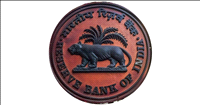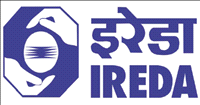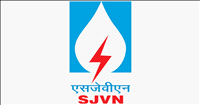More products on the anvil
By Venkatachari Jagannathan | 10 Apr 2001
One of the arguments advocated for opening up of the insurance sector is that the new players tying up with foreign insurers would offer innovative products, something that private insurers have so far not shown.
HDFC Standard Life, a joint venture between India's leading housing finance institution, Housing Development Finance Corporation (HDFC) and the UK-based Standard Life Assurance Company, began its operations by introducing two policies - endowment and money back – with slight variation from the products that have been in existence for several decades in this country.
The variation, observers say, is a marketing ploy to make comparisons with big brother Life Insurance Corporation of India's (LIC) products.
Justifies Mr. Satwalekar, "As per our market survey, it was found that the above were the two most popular products and we decided to launch them."
While that is true, one of the reasons for endowment and money back policies to be more popular than others is the fact that Life Insurance Corporation of India (LIC) agents pushed them vigorously. The reason - commission on these products is higher than other products. As a result the market is not aware about other usual products that are in LIC's portfolio.
That apart there is no great difference between the premium rates of LIC and of HDFC Standard Life. According to industry sources, the premium charged by the company for add-on benefits to its basic cover is slightly higher than that of LIC rates.
What is interesting to note is that HDFC Standard Life is using LIC's mortality table and has pegged its premium more or less at par with that of the latter. Here again it is to be recalled that during the run up to the opening up of the sector LIC was castigated for
non revision of its mortality table for decades despite the fact that life expectancy has increased several times over the years.
Given this situation is it not fair for HDFC Standard Life, as a new entrant, to charge a lower rate by devising its own mortality table with the help of 175-years old Standard Life Assurance?
Responding to that Mr. Nick Taket, actuary and general manager (finance) of HDFC Standard Life remarks, "The premium and the policy returns- bonus on policies- are inter-linked. Low premium will entail lower returns and vice versa. Hence we decided to take the second route."
But HDFC Standard Life, according to Mr. Satwalekar, will be able to declare bonus to its policyholders only after three years when they expect to have valuation surplus (the difference between assets and liabilities excluding shareholders funds).
In order to overcome this jinx and capture new business, industry sources say that new companies may declare bonus by transferring funds from shareholders account. And for this purpose the promoters are expected to infuse additional funds during the initial years.
In fact one of the demands from the new entrants in life insurance is to tax exempt moneys transferred from shareholders' funds to valuation surplus account so that they can declare bonus from the first year of operations.
"The essence of regulations is to protect the policyholders' money. So there is nothing wrong in transferring money from shareholders' funds to valuation surplus account," justifies Mr. Taket.
Not all agree with this school of thought. "Declaring bonus out of shareholders' funds is akin offering premium rebate which is expressly prohibited by the Insurance Act", warns Mr. R. Ramakrishnan, chairman, Reserve Bank of India's advisory group on insurance
and member, Malhotra Committee on Insurance Reforms.
A bonus declared out of shareholders' funds would give a misleading impression to the policyholders about the financial health of the life insurer. As per the Insurance Act, bonus to policyholders should be declared only out of valuation surplus or free reserves created out of surplus during the earlier years. All other moneys that are channelled to the
surplus account should be reflected in the revenue account, he asserts.
Be that as it may, HDFC Standard Life, which began with a paid up capital of Rs.163 crore, expects additional funds to the tune of Rs.200 - Rs. 300 crore from the promoters over a period of three years.
"Life insurance is a strange business. The more business one underwrites the more money one needs for provisioning and to meet the solvency norms," says Mr. Satwalekar. The company will not be making any profits for the first five years, he adds.
More products on the anvil
Meanwhile come July, HDFC Standard Life will be launching its pension product/annuity policy and unit linked insurance product. The company also plans to
launch a mortgage redemption policy that is similar to LIC Housing Finance and LIC scheme.
Under this scheme HDFC housing loan borrowers would be asked to take out a life insurance policy. While the premium will take care of the debt, the borrower would have to service only the interest component. The insurance company is expected to rake in sizeable business as considering its parent company's loan disbursement of Rs. 4,492 crore (fiscal 2000).
This is set to increase further given that HDFC has taken over Hometrust Housing Finance, besides taking a 28 per cent stake in Gruh Finance Ltd, a company floated with cement major, Gujarat Ambuja Cement.
Through a network of 200 financial consultants, HDFC Standard Life has already sold around 6,000 out of targeted 25,000 policies. In order to fulfil its licensing norms of doing stipulated rural business the company is tying up with NGO's.
The other marketing channel that the company will be using is the banks and corporates. The company has signed an agreement with Indian Bank and Srei International Finance for the purpose.
According to Mr. Taket, the company hopes to earn around Rs. 13 crore during the first year and also enrol around 2,500 agents, or financial consultants as the company would like to term them.
The area where the company largely differs with that of LIC is in its target market segment. According to Mr. Satwalekar, the company's target segment is the people in the age group of 20-59 years whereas for LIC the segment is those who are between 15-59 years of age.
With three offices functioning now - Mumbai, Delhi and Chennai- HDFC Standard Life according to Mr. Pankaj Seith, head - marketing, plans to open branches in 18 more cities.
In the final count, the launch of life insurance company fills the gap in the entire gamut of financial services offered by HDFC group. What HDFC still lacks is a general insurance outfit which, according to Mr. Parekh, chairman of HDFC, may happen by this December since the financial institution is talking to some overseas general insurers for a possible collaboration.






























